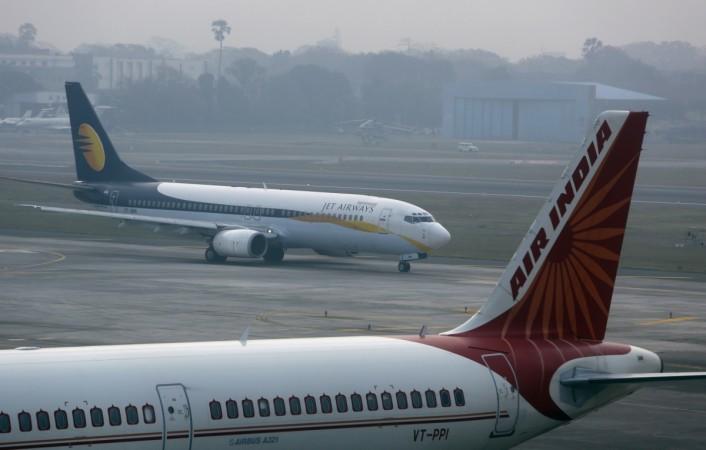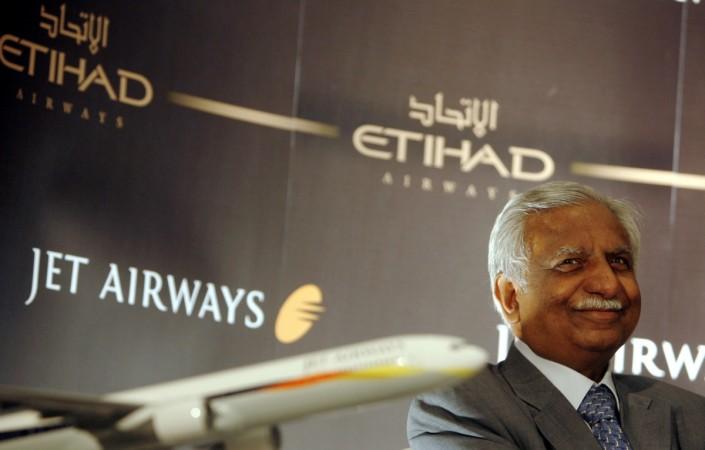
The debt conundrum in two of India's leading airlines, Jet Airways and state-owned Air India, can be dealt with a silver bullet, experts have said. That silver bullet is nothing but the merger of the two. It may appear foolhardy to marry the two ailing airlines, but industry observers see merit in this option.
Jet Airways had earlier brushed aside the option of acquiring debt laden rival Air India, when the latter's privatisation was floated. Now Jet itself has landed on the block, waiting for a suitor.
The irony is that Indian demand for travel continues to grow, with passengers on domestic flights rising by double digits for 46 straight months since September 2014. The market reached the milestone of 100 million travelers in 2017, and shows no signs of slowing down this year.
Writing in Bloomberg, David Fickling argues that the merger of Jet airways and Air India will address the key reason behind the recent troubles of both, especially those of Jet. He says that cutthroat price war in Indian aviation scene, which has been forcing airlines into deep discounting, is one of the primary reasons behind the continued struggles at Jet Airways.
And the major share of the blame is on Air India, which has no hopes of turning around, even if they didn't depress prices further. In the event, once-healthy airlines like Jet have been in a losing battle against the state-owned carrier.
Besides brutal price competition, the Indian airlines have also been in major fleet expansion drive in the last decade, another byproduct of intense competition. Both the Maharaja and Jet Airways are being crushed under the weight of a reckless fleet expansion drive, he points out.
Suicidal discounting
If the only two full service carriers in India were to merge, both could do away with suicidal discounting, he argues. A rationlisation of ticketing will itself be a crucial part of the turnaround of both the airlines, he says. Besides, the "the seasoned professional management that the Maharajah so desperately needs would be on hand in the shape of Goyal, Jet's chairman, and his executive team," avers Flickling.
Well, this route might may not resolve all of the issues plaguing the two airlines, especially, Air India, with its plethora of legacy issues. However, it does seem to be a step in the right direction, though at the cost of the customers.
A look at the way air travel in India is shaping up will baffle observers. India is one of the most thriving airline markets in the world the country has an emerging middle class. Air travel demand is growing each year.
The Nikkei daily put this paradox in perspective in a report in August 2018:
"The irony is that Indian demand for travel continues to grow, with passengers on domestic flights rising by double digits for 46 straight months since September 2014. The market reached the milestone of 100 million travelers in 2017, and shows no signs of slowing down this year."

Yet, airline companies are bleeding, owing to a factor euphemistically termed as "competitive fare environment."
If major airlines in India have been losing altitude despite the county being one of the biggest markets, then there's a problem at hand. Many experts have already said the looming crises at Jet Airways and Air India will finally pose a threat to Prime Minister Narendra Modi's re-election bid as well.
The failure of Kingfisher Airlines is still an unfinished page in the book of great Indian corporate fiascos. Air India was given a very expensive bailout in 2012 and is still on life support system. And Jet Airways is the latest entrant to the roll of dishonour. The government will have to get down and get its hand dirty sooner rather than later.
Will a merger of two weak airlines create a healthy airline? That paradoxical proposition is worth a try, by all means.

















